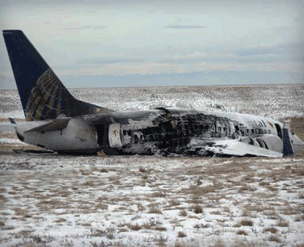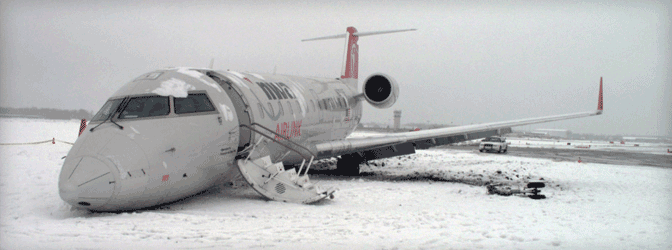What is the issue?
 Takeoffs and landings, in which the risk of a catastrophic accident is particularly high, are considered the most critical phases of flight. Unlike the airspace above the United States, which spans millions of square miles, the runway environment is a far more limited area, often with a steady stream of aircraft taking off and landing on intersecting runways, sometimes in poor weather and with limited visibility. These conditions put aircraft at an increased risk for ground collisions and excursions (overrunning or undershooting the runway during takeoff or landing). Runway accidents have the potential for significant loss of life and injury. For example, in March 1977, in what remains the world's deadliest aviation accident, two passenger jumbo jets collided on a runway at Tenerife, in the Canary Islands, killing 583 passengers and crew. In the United States, the deadliest U.S. runway incursion accident occurred in August 2006 when Comair flight 5191, a regional jet, crashed after attempting to take off from the wrong runway, killing 49 of the 50 people on board. From the 1977 Tenerife accident through the present day, the NTSB continues to investigate serious runway collisions and runway overruns and departures.
Takeoffs and landings, in which the risk of a catastrophic accident is particularly high, are considered the most critical phases of flight. Unlike the airspace above the United States, which spans millions of square miles, the runway environment is a far more limited area, often with a steady stream of aircraft taking off and landing on intersecting runways, sometimes in poor weather and with limited visibility. These conditions put aircraft at an increased risk for ground collisions and excursions (overrunning or undershooting the runway during takeoff or landing). Runway accidents have the potential for significant loss of life and injury. For example, in March 1977, in what remains the world's deadliest aviation accident, two passenger jumbo jets collided on a runway at Tenerife, in the Canary Islands, killing 583 passengers and crew. In the United States, the deadliest U.S. runway incursion accident occurred in August 2006 when Comair flight 5191, a regional jet, crashed after attempting to take off from the wrong runway, killing 49 of the 50 people on board. From the 1977 Tenerife accident through the present day, the NTSB continues to investigate serious runway collisions and runway overruns and departures.
What can be done . . .
Reducing the likelihood of runway collisions is dependent on the situational awareness of the pilots and time available to take action—often a matter of just a few seconds. A direct in-cockpit warning of a probable collision or of a takeoff attempt on the wrong runway can give pilots advance notice of these dangers. Requiring specific air traffic control clearance for each runway crossing would reduce the chances that an airplane will inadvertently taxi onto an active runway on which another aircraft is landing or taking off.
Situational awareness is also important in addressing runway excursions. Pilots need accurate information on runway conditions. Equipment should be properly set for takeoff or landing and function properly. Pilot training and procedures should emphasize conducting distance assessments for all landings, especially on contaminated runways; training on maximum performance stopping on a slippery runway; and identifying the appropriate runway for their aircraft.

Related Reports
Title: Aircraft Accident Report: Attempted Takeoff From Wrong Runway Comair Flight 5191 Bombardier CL-600-2B19, N431CA Lexington, Kentucky August 27, 2006
NTSB Report Number: AAR-07-05, adopted on 7/26/2007 [Summary | PDF Document]
Title: Aircraft Accident Report: Runway Overrun and Collision Southwest Airlines Flight 1248 Boeing 737-74H, N471WN Midway Airport Chicago, Illinois, December 8, 2005
NTSB Report Number: AAR-07-06, adopted on 10/2/2007 [Summary | PDF Document]
Title: Aircraft Accident Report: Runway Overrun During Landing Pinnacle Airlines Flight 4712 Bombardier/Canadair Regional Jet CL600-2B19, N8905F Traverse City, Michigan April 12, 2007
NTSB Report Number: AAR-08-02, adopted on 6/10/2008 [Summary | PDF Document]
Title: Aviation Accident Report: Runway Side Excursion During Attempted Takeoff in Strong and Gusty Crosswind Conditions Continental Airlines Flight 1404, Boeing 737-500, NN18611, Denver, Colorado, December 20, 2008
NTSB Report Number: AAR-10-04, adopted on 7/13/2010 [Summary | PDF Document]
